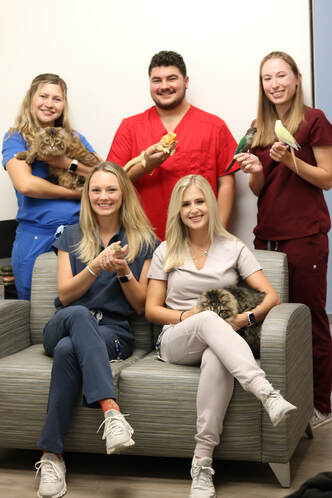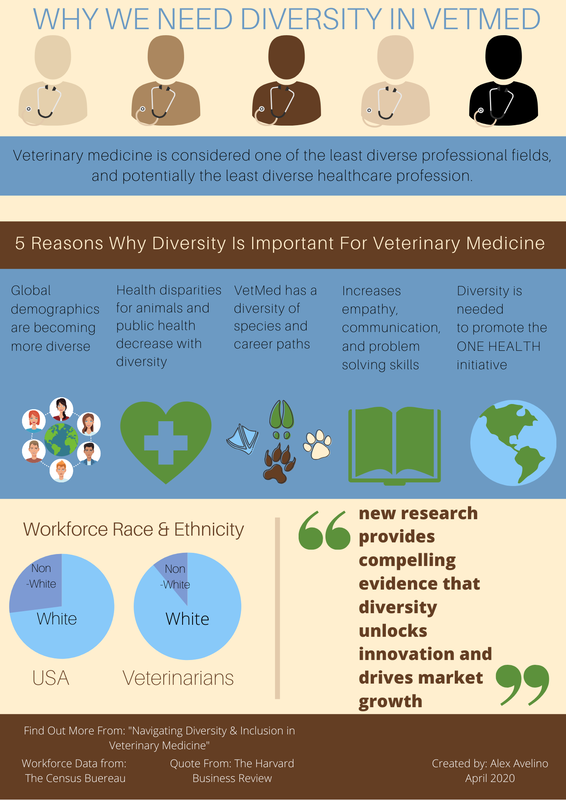Diversity in veterinary medicine
|
You may have heard about the importance of having diversity in all professions. Veterinary medicine is no exception, especially because we work with clients from all different backgrounds and abilities, we serve the public through ensuring food safety, researching zoonotic diseases and preserving the human-animal bond.
However, veterinary medicine is seen as a very homogeneous profession; according to The Census Bureau, 89% of all veterinarians are white. When we talk about diversity, we're thinking about factors like: age, disability, sexual orientation, gender identity, religious or political beliefs, socioeconomic background and the importance of including members from all groups. In the pinnacle text, Navigating Diversity and Inclusion in Veterinary Medicine, authors note "there are insufficient numbers of individuals who are representative of the underrepresented populations... it is useful to have any role model who can help the potential recruit envision himself or herself as a successful veterinarian" (Lloyd, 2013, p. 85). Therefore, the goal of Underrepresented No More is to provide a one-stop-shop of resources for pre-vet students to see professionals who come from similar backgrounds and to know they are not alone. |
diversity affects the veterinary profession
Learn More here
The Importance of Diversity to Public Health by David Satcher, MD, PhD (Satcher D, 2008)
One Health Initiative (One Health Initiative, n.d)
Shifting Demographics by The United Nations (United Nations, n.d)
Careers in Veterinary Medicine (AAVMC, n.d.)
How Racially Diverse Schools and Classrooms Can Benefit All Students (Wells, Fox, & Cordova, 2016)
One Health Initiative (One Health Initiative, n.d)
Shifting Demographics by The United Nations (United Nations, n.d)
Careers in Veterinary Medicine (AAVMC, n.d.)
How Racially Diverse Schools and Classrooms Can Benefit All Students (Wells, Fox, & Cordova, 2016)
A word from the american association of veterinary medicine (AAVMC)

"Historically, AAVMC has identified and recognized the presence of specific historically underrepresented populations in veterinary medicine (URVM) whose advancement in the veterinary medical profession has been disproportionately impacted due to legal, cultural, or social climate impediments in the United States. The specific dimensions are: gender, race, ethnicity (African Americans, Asian Americans, American Indians, Native Alaskans and Hawaiians, Hispanics), and geographic, socioeconomic, and educational disadvantage. We recognize that internationally, there may be broad similarities in historically marginalized populations, such as indigenous and/or First Nations peoples; however, there may also be continental and country specific differences in the characterization of historically underrepresented populations outside of the United States." AAVMC. (2017, February 2). Retrieved May 11, 2020, from https://www.aavmc.org/.
Diversity empowers us to innovate, to be compassionate, and to uplift our society because it teaches us how to look at the world through perspectives other than our own. When you’re surrounded by a diverse group of people, suddenly you don’t feel like an imposter and your potential is whatever you decide it is. -Tenor, DVM student | Class of 2023


